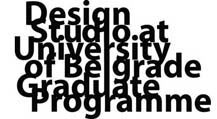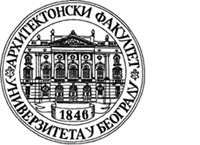Modul M6.2 Seminar, 2 ESPB
Naziv Predmeta: Istraživanje kroz projekat – Adaptivnost
docent Djordje Stojanović, asistent Milutin Cerović
Naziv predavanja: Nevrovatne šezdesete
Sadržaj predavanja: Razjašnjenje pojma i konceptualnog okvira „Adaptivna arhitektura“
U arhitektonskoj teoriji i praksi se tokom šezdesetih godina javljaju ideje koje impliciraju različite vidove adaptivnosti ili promenljivosti izgrađenog okruženja. Ove ideje se manifestuju kao niz utopističkih projekata i veoma mali broj realizovanih ideja. Vezuju se za prestanak dominacije diskursa koji je postavio CIAM (Congrès internationaux d’architecture moderne) i nastanak Tima 10 (Team 10), kao i delovanje niza drugih autora koji se koincidentno u različitim sredinama bave ovim problemom. Praktična potvrda arhitektonskih tendencija iz šezdesetih godina nikada nije ostvarena ali je uticaj ideja o adaptivnim i promenljivim koncepcijama prostora, nastalim u ovom periodu, veoma vidljiv u savremenoj arhitektonskoj teoriji i to upravo kroz pet termina koji su identifikovani u vidu ključnih prostornih karakteristika ili odrednica organizacije prostora koje upotrebljavaju sami autori u opisima svojih projekata. To su: polivalentnost, adaptivnost, reaktivnost, mobilnost i sposobnost rasta.
Izvori:
- Lüchinger, A. 1981. Structuralism architecture and urban planning. Stuttgart: Karl Kramer
- Hertzberger, H. 2000. Space and the architect. Rotterdam: 010 Publishers.
- Hertzberger, H. 2008. Space and learning. Rotterdam: 010 Publishers.
- Hertzberger, H. 2009. The relational space. Rotterdam: 010 Publishers.
- van Eyck, A. 1962. Steps toward a configurative discipline. Forum No 3. pp.81-94.
- ArchiNed Rotterdam, and the Faculty of Architecture TU Delft., 2005. Team 10 online. (online) Available at: < http://www.team10online.org/> (Accessed 2 February 2013).
- Habraken J. 1972. Supports, an Alternative to Mass Housing (1962). Architectural Press in London.
- Haque, U. 2007. The Architectural Relevance of Gordon Pask. In: L. Bullivant ed. Interactive Design Environments. Architectural Design Volume 77(4). London: Wiley Academy. pp.54–61.
- Landau, R. 1968. New directions in British Architecture. London: Studio Vista.
- The Archigram Archival Project. (online) Available at: < http://archigram.westminster.ac.uk/> (Accessed 2 February 2013).
- Sadler S. 2005. Archigram Architecture without Architecture. MIT
- Banham, R. 1976. Megastructure: urban futures of the recent past. New York: Harper and Row.
- Kurokawa, K. 1977. Metabolism in architecture. London: Studio Vista.
- Lin, Z. 2010. Kenzo Tange and the Metabolist movement: urban utopias of modern Japan. New York: Routledge.
- Pernice, R. 2004. Metabolism Reconsidered: Its Role in the Architectural Context of the World. Journal of Asian Architecture and Building Engineering, Volume 3(2). p. 359.
- Ross, F. 1978. Beyond metabolism: The new Japanese architecture. New York: Architectural record books.
- Alexander, C. 1964. Notes on the Synthesis of Form. Cambridge, Massachusetts: Harvard University Press.
- Allen, S. 2000. Practice: architecture, technique and representation. New York and London: Routledge.
- Eisenman, P. 2003. The Formal Basis of Modern Architecture (1963). Zurich: Lars Muller Publishers.
- Evans, R. 1997. Translations from drawing to building and other essays. London: Architectural Association Publications.
- Lynn, G. 1999. Animate Form. New York: Princeton Architectural Press.
- Somol, R. 1999. Diagramtic Basis of Contemporary Architecture. In: P. Eisenman, ed. 1999. Digram Diaries. Thames and Hudson. pp.6-25.
- Somol R. 1998. The Diagrams of Matter. In: B. van Berkel, and C. Boss, eds. Diagram Work. ANY, No 23. New York: Anyone Corporation. pp.57 -62.
- van Berkel, B. and Bos, C. 1998. Interactive Instruments in Operation. In: B. van Berkel, and C. Boss, eds. Diagram Work. ANY, No 23. New York: Anyone Corporation. pp.19-23.
- Ayres, P. ed. 2012. Persistent Modelling, Extending the Role of Architectural Representation. London: Routledge.
- DeLanda, M. 2000. Deleuze and the Use of the Genetic Algorithm in Architecture. (online) Available at: < http://www.cddc.vt.edu/host/delanda/pages/algorithm.htm> (Accessed 14 February 2013).
- Deleuze, G. and Guattari, F. 1988. Thousand Plateaus (1980). Translated from French by B. Massumi., 1988. London: The Athlone Press.
Film:
- Davis, D. and Talbot, S. 2005. The Sixties: The Years That Shaped a Generation. PBS documentary. Available at: http://www.youtube.com/watch?v=mUc2eLe-ruI
Tags: Lectures



